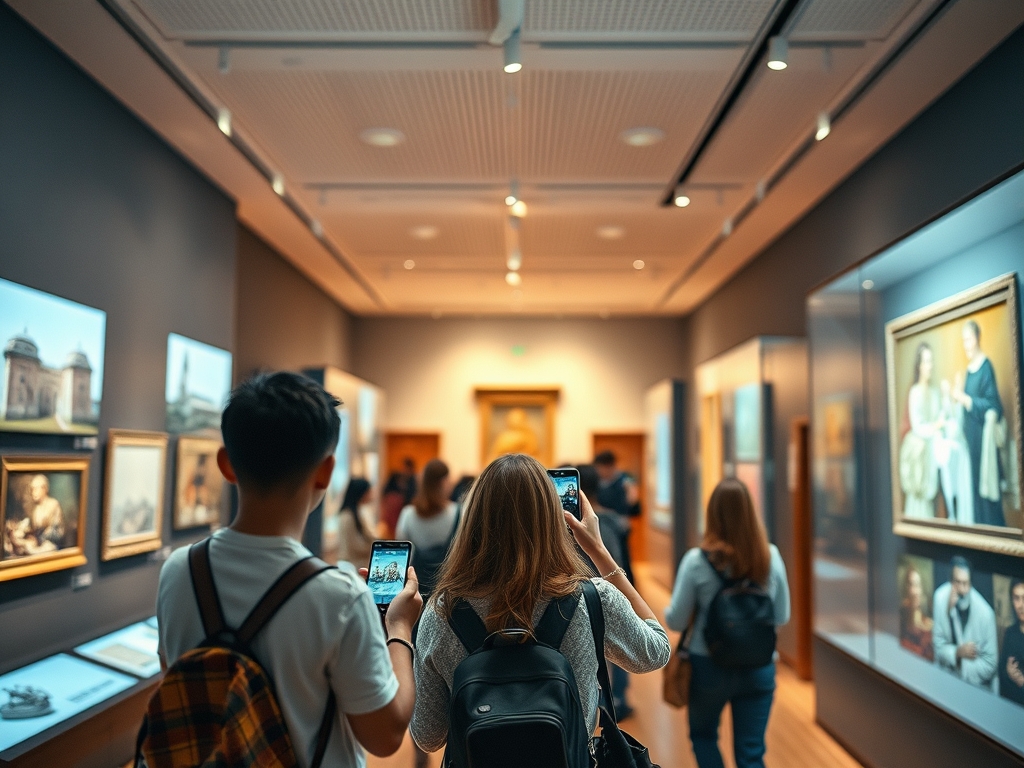Virtual, interactive and engaging exhibitions - how to create them in Shapespark?

The benefits of offering audiences the opportunity to visit museums virtually have long been talked about. However, the most dynamic development of the possibility of visiting exhibitions in this way began after the outbreak of the pandemic. Lockdown meant that access to culture and art was only possible via the web. The pandemic restrictions have passed, but the technologies that enable virtual tours continue to develop rapidly, with more and more museums making their resources available online. What are the biggest advantages of such solutions, and why should you invest in them?
Augmented reality exhibitions Our reality mixes more strongly with the digital world every year. Modern exhibitions are increasingly more than just walking around and seeing static exhibits described by a guide standing next to you. Museums today use a combination of physical elements with virtual images, sounds and animations that enrich the reception. The form of exhibitions in many museums or art galleries is increasingly adapted to the modern viewer, who is accustomed to the dynamic message that modern media serve him or her on a daily basis.
How do museums make their exhibitions more attractive? The simplest way is to place a QR code next to each exhibit. Visitors can scan it with their smartphone and read or view additional information about a particular exhibit. More and more museums are also making their mobile apps available, which offer many more possibilities. Such apps not only allow you to expand your knowledge, see additional animations or visualizations or listen to a virtual guide, but also use AR to organize, for example, gamification that encourages you to explore the nooks and crannies of the museum in greater depth.
Fully virtual interactive exhibitions Modern technologies allow not only to expand the possibilities and ways to view physical exhibitions. Interactive 3D walkthroughs make it possible to bring almost any exhibition or gallery into a virtual world. This allows anyone with access to the web to visit a museum located in the other hemisphere from their armchair. The collections of many museums and exhibitions are made available online through Google Arts. There are also a plethora of places that create their own 3D virtual tours, allowing you to peek into every nook and cranny and see all the details up close. What are the biggest advantages of virtual exhibitions?
Complete freedom for the viewer. Visitors who use the resources of a museum or art gallery in virtual form can move freely from room to room, return to the places that interested them and view the exhibits from different distances and perspectives. They can spend as much time as they need at individual sites without the pressure of having someone else standing right behind them waiting their turn.
Realistic experience. Professionally created visualizations are images of great quality that perfectly reproduce not only colors and patterns, but even textures and the smallest details. Reflecting a real exhibition or presenting a place that exists only virtually. Modern tools make it possible to virtually reflect a museum or gallery that exists physically, but not only. In this way, you can also create an exhibition that never existed in the real world.
Many possibilities. Within a virtual exhibition, you can provide static images, 3D exhibits, as well as additional audio or video recordings to make the tour more interesting.
Accessibility. Virtual exhibitions can be accessible to almost anyone, from any browser. All the recipient needs is a link, a comfortable chair and a moment of free time to visit a museum he or she might never see in traditional form.
How to create an interactive exhibition in ShapeSpark? ShapeSpark allows you to create detailed and interactive 3D virtual exhibitions accessible through browsers. How can you create your exhibition using our tool? You will do it in a few simple steps.
- Import a 3D model of your virtual exhibition.
- Using the easy-to-use interface of our rendering engine, customize the final look of your virtual exhibition.
- Add interactive elements. You can add so-called hotspots, i.e. elements that, when clicked, display additional information about exhibits, images, etc. That’s not all. You can also like give users to change exhibit elements, such as images on the wall.
- Customize the user interface. ShapeSpark allows you to edit the user interface. You can fully customize it – change the logo, branding, and navigation elements that will give the user a smooth weighing experience and allow it to sink into the reality you are viewing.
- Publish and share your exhibition. Once your exhibition is created, you can publish it directly to the web or embed it on your website. You can also share it with others using social media, email or other channels.
In the coming years, technological advancements and the rise of virtual reality are likely to revolutionize the art world. This could lead to an increase in the number of virtual museums and exhibitions that use augmented reality, providing a new way to experience art that is both immersive and interactive. However, despite the potential benefits of virtual museums, critics argue that they cannot replace the physical experience of visiting a museum or gallery. Nevertheless, online exhibitions have already become one of the most important ways for audiences to engage with art easily, especially during times of limited physical access. As such, virtual museums and exhibitions could complement traditional museums, providing a new and exciting way for people to experience art in the near future.